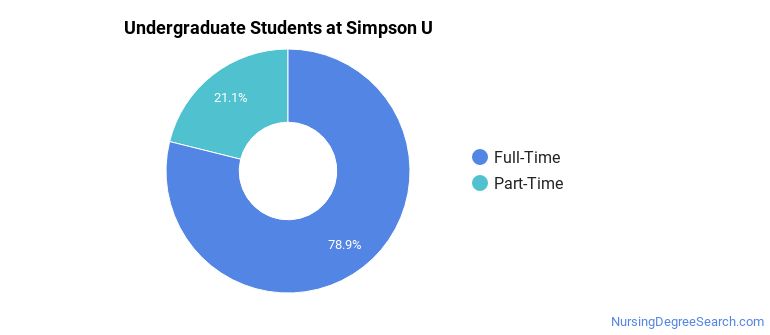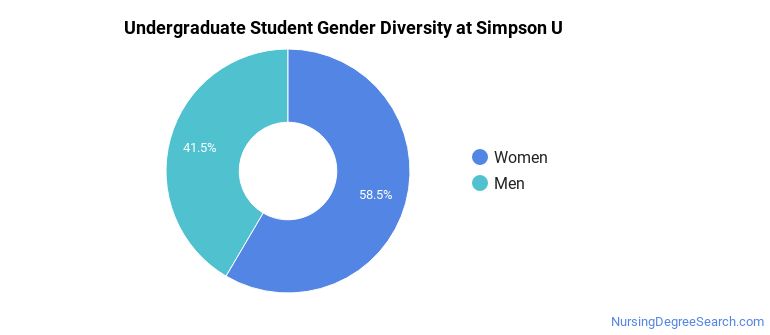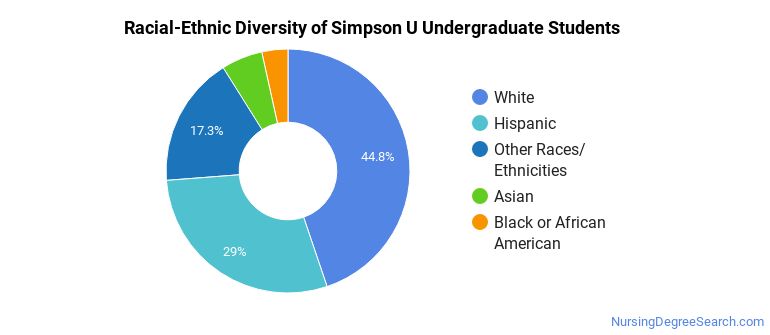Simpson University Nursing Programs
Simpson University is a private not-for-profit institution located in Redding, California. The surrounding area of the school is a good match for students who enjoy city life.
Where Is Simpson University?

Contact details for Simpson U are given below.
| Contact Details | |
|---|---|
| Address: | 2211 College View Drive, Redding, CA 96003-8606 |
| Phone: | 530-224-5600 |
| Website: | www.simpsonu.edu |
How Do I Get Into Simpson U?
You can apply to Simpson U online at: www.simpsonu.edu/apply
Can I Afford Simpson University?
The net price is calculated by adding tuition, room, board and other costs and subtracting financial aid.
Student Loan Debt
Almost 66% of college students who graduated with the class of 2018 took out student loans, but that percentage varies from school to school. At Simpson U, approximately 61% of students took out student loans averaging $8,107 a year. That adds up to $32,428 over four years for those students.
Simpson University Undergraduate Student Diversity

There are also 159 graduate students at the school.
Gender Diversity
Of the 549 full-time undergraduates at Simpson U, 42% are male and 58% are female.

Racial-Ethnic Diversity
The racial-ethnic breakdown of Simpson University students is as follows.

| Race/Ethnicity | Number of Grads |
|---|---|
| Asian | 30 |
| Black or African American | 19 |
| Hispanic or Latino | 159 |
| White | 246 |
| International Students | 0 |
| Other Races/Ethnicities | 95 |
Geographic Diversity
California students aren't the only ones who study at Simpson University. At this time, 11 states are represented by the student population at the school.
Over 11 countries are represented at Simpson U. The most popular countries sending students to the school are China, Hong Kong, and Canada.
Simpson University Nursing Concentrations
The table below shows the number of awards for each concentration.
| Major | Bachelor’s | TOTAL |
|---|---|---|
| Registered Nursing | 53 | 53 |
| TOTAL | 53 | 53 |
References
*The racial-ethnic minorities count is calculated by taking the total number of students and subtracting white students, international students, and students whose race/ethnicity was unknown. This number is then divided by the total number of students at the school to obtain the racial-ethnic minorities percentage.
- College Factual
- National Center for Education Statistics
- Image Credit: By Morgan Riley under License
More about our data sources and methodologies.
